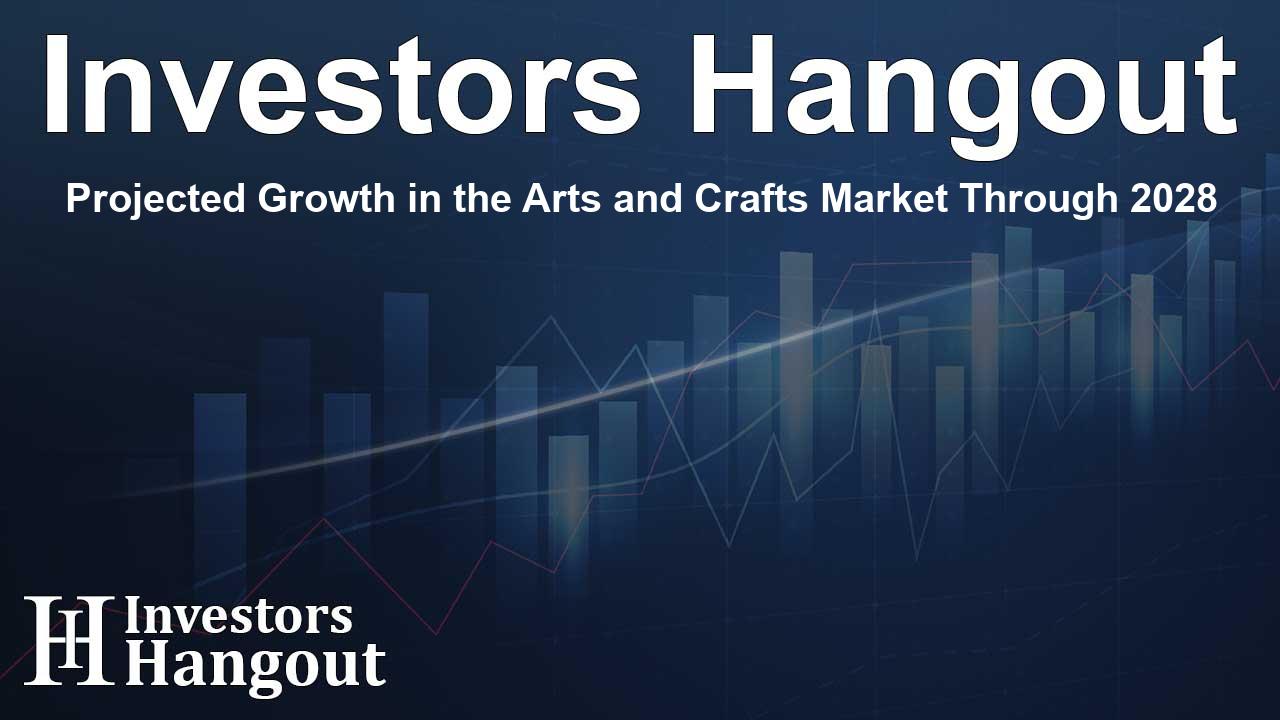Projected Growth in the Arts and Crafts Market Through 2028

Projected Growth in the Arts and Crafts Market Through 2028
The global arts and crafts market is on the verge of substantial growth, with estimates suggesting an increase of USD 35.45 billion from 2024 to 2028. According to recent reports, this impressive growth trajectory indicates a compound annual growth rate (CAGR) of 9.3% throughout this period. This expansion is largely driven by the emerging gifting culture and a growing inclination toward eco-friendly products.
Key Drivers of Market Growth
The evolving norms surrounding gift-giving are significant contributors to the market's growth. In today's world, consumers are placing a higher value on environmentally friendly arts and crafts supplies, which resonate with their desire for sustainability. Noteworthy is the incorporation of water hyacinth, often seen as an invasive aquatic weed, into beautiful, high-value craft products. Local artisans are utilizing this natural resource creatively to produce a variety of eco-friendly items.
Innovations in Eco-Friendly Crafts
Artisans from different regions are showcasing their skills by creating products such as handbags, decorative baskets, and home decor items that not only serve functional purposes but also remain stylish. These innovations underscore the shift towards eco-consciousness among consumers who prefer handmade crafts that embody both beauty and sustainability. The demand for such artisanal products is not restricted to local markets; rather, it has gained a global appeal.
Online Accessibility and Market Trends
The arts and crafts industry has been invigorated by the rise of e-commerce and online retail. With consumers increasingly seeking to purchase handcrafted items from the comfort of their homes, the availability of DIY kits has surged. These kits include materials for drawing, sewing, and various craft activities tailored for children, promoting creative engagement across age groups.
Impact of Digitalization on the Market
The integration of technology has revolutionized the arts and crafts market. The ease of online purchasing, coupled with personalized packaging, has made it simpler for consumers to access a plethora of unique, handmade creations. As a result, crafting workshops now offer exceptional experiences, blending tourism with cultural exchange, allowing participants to learn new skills while discovering the local craft scene.
Emerging Challenges in the Arts and Crafts Sector
Despite the promising growth rate, the industry does face challenges, particularly for artisans with limited access to modern technology. Many traditional craftspeople struggle to market their products effectively in an increasingly digital marketplace. The lack of digital marketing skills prevents these artisans from capitalizing on the vast opportunities offered by online platforms, subsequently restricting their customer reach.
The Need for Digital Empowerment
To navigate these hurdles, it is crucial for artisans to bridge the technological gap, enhancing their online visibility and sales. This could ensure not just their sustainability but also expand their business prospects well beyond the local community. Addressing these challenges will be vital for the artisans, enabling them to tap into new channels and broaden their market footprint.
Market Segmentation Insights
The arts and crafts market is diverse with various segments, including paper crafts, decorative crafts, functional crafts, textile crafts, and fashion crafts. These segments cater to different consumer tastes and preferences, highlighting the complexity and variety within the market landscape.
Types of Crafts and Distribution Channels
Distribution channels further classify into online and offline sales avenues. The online sector has especially flourished, offering artisans an opportunity to reach global customers, while brick-and-mortar stores still provide essential tactile experiences for shoppers.
Future Outlook for Arts and Crafts
Looking ahead, the arts and crafts market is poised for continued innovation and growth, driven by evolving consumer preferences. The emphasis on sustainability, coupled with emerging trends in DIY culture, suggest a vibrant future for this creative sector.
Frequently Asked Questions
What is driving the growth of the arts and crafts market?
The growth is primarily driven by an increased gifting culture and heightened consumer demand for eco-friendly products.
How important is technology in the arts and crafts sector?
Technology is crucial as it enhances accessibility to products through online sales and helps artisans market their goods more effectively.
What are the main challenges faced by artisans?
Limited access to modern technology and digital marketing skills poses significant challenges for many artisans in reaching broader audiences.
What segments are included in the arts and crafts market?
Key segments include paper crafts, decorative crafts, functional crafts, textile crafts, and fashion crafts.
How has consumer behavior evolved in the arts and crafts market?
Consumers are increasingly favoring sustainable, eco-friendly options, alongside a growing preference for handmade, unique items that add value to gift-giving.
About The Author
Contact Olivia Taylor privately here. Or send an email with ATTN: Olivia Taylor as the subject to contact@investorshangout.com.
About Investors Hangout
Investors Hangout is a leading online stock forum for financial discussion and learning, offering a wide range of free tools and resources. It draws in traders of all levels, who exchange market knowledge, investigate trading tactics, and keep an eye on industry developments in real time. Featuring financial articles, stock message boards, quotes, charts, company profiles, and live news updates. Through cooperative learning and a wealth of informational resources, it helps users from novices creating their first portfolios to experts honing their techniques. Join Investors Hangout today: https://investorshangout.com/
The content of this article is based on factual, publicly available information and does not represent legal, financial, or investment advice. Investors Hangout does not offer financial advice, and the author is not a licensed financial advisor. Consult a qualified advisor before making any financial or investment decisions based on this article. This article should not be considered advice to purchase, sell, or hold any securities or other investments. If any of the material provided here is inaccurate, please contact us for corrections.
